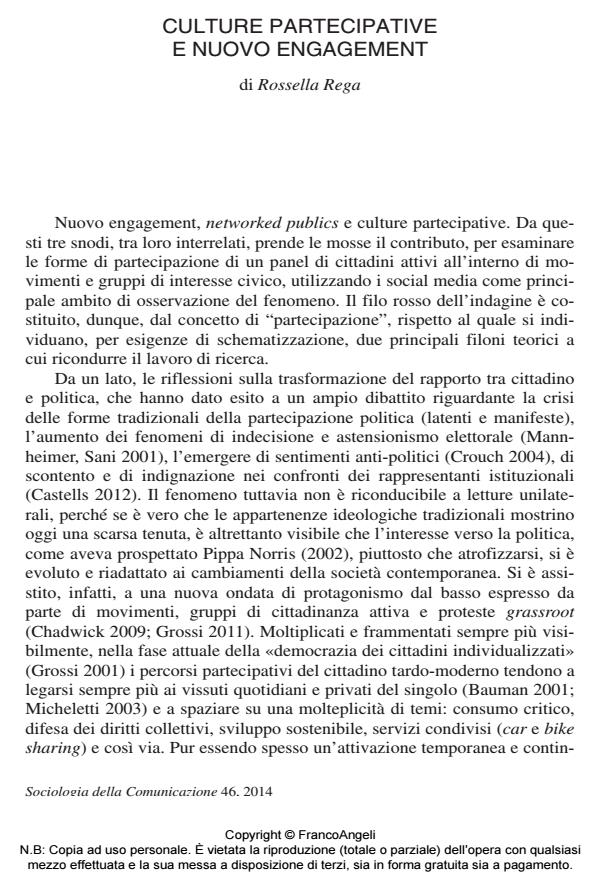Participatory Culture and New Engagement
Journal title SOCIOLOGIA DELLA COMUNICAZIONE
Author/s Rossella Rega
Publishing Year 2014 Issue 2013/46
Language Italian Pages 19 P. 131-149 File size 553 KB
DOI 10.3280/SC2013-046009
DOI is like a bar code for intellectual property: to have more infomation
click here
Below, you can see the article first page
If you want to buy this article in PDF format, you can do it, following the instructions to buy download credits

FrancoAngeli is member of Publishers International Linking Association, Inc (PILA), a not-for-profit association which run the CrossRef service enabling links to and from online scholarly content.
The aim of this research is to analyze whether the engagement of a panel of citizens belonging to active citizens’ groups, when in contact with the participatory culture expressed by the social media, generate a connection between practices and communication repertoires of political engagement and the ones that characterize the social network sites. Through an hybrid methodological procedure, based on interviews and analysis of Facebook walls of the activists, it’s came out that in the social media context, where private and public sphere are deeply related, one can observe an harmonization between political language and disengaged language. The same process has been observed with regard to the typologies of the online civic engagement and the forms of fan culture.
Keywords: Civic engagement, political engagement, networked publics, participatory culture, social media, digital ethnography.
- Razões militantes em primeira pessoa Antonio Teixeira de Barros, in Revista Brasileira de Sociologia - RBS /2022
DOI: 10.20336/rbs.860
Rossella Rega, Culture partecipative e nuovo engagement in "SOCIOLOGIA DELLA COMUNICAZIONE " 46/2013, pp 131-149, DOI: 10.3280/SC2013-046009